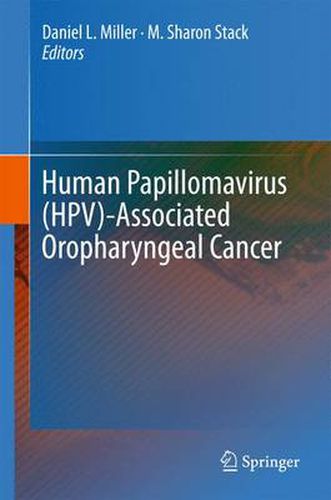Readings Newsletter
Become a Readings Member to make your shopping experience even easier.
Sign in or sign up for free!
You’re not far away from qualifying for FREE standard shipping within Australia
You’ve qualified for FREE standard shipping within Australia
The cart is loading…






This title is printed to order. This book may have been self-published. If so, we cannot guarantee the quality of the content. In the main most books will have gone through the editing process however some may not. We therefore suggest that you be aware of this before ordering this book. If in doubt check either the author or publisher’s details as we are unable to accept any returns unless they are faulty. Please contact us if you have any questions.
Head and neck squamous cell carcinoma (HNSCC), the sixth most prevalent cancer worldwide, remains a very difficult disease to treat and cure despite intensive investigation into molecular etiologies and tumor progression pathways. Due to public health efforts encouraging smoking cessation, the overall incidence of HNSCC has decreased in recent years in many countries. In contrast, the incidence of oropharyngeal squamous cell carcinoma (OPSCC) has increased significantly, and this subtype of HNSCC is commonly associated with human papillomavirus (HPV) infection. Moreover, individuals with HPV-positive OPSCC are generally younger and are frequently non-smokers, suggesting that HPV-associated OPSCC represents a distinct biologic entity.
This volume summarizes the spectrum of current HPV-associated OPSCC research from the fundamental basic science to translational surgery and treatment approaches. Chapters are contributed by authoritative leaders in the fields of research and clinical care. Initial chapters address epidemiology, behavioral correlates of HPV infection, and racial disparities in oropharyngeal cancer. This is followed by chapters detailing HPV virology with focus on viral transformation, viral replication, and host response to viral infection. The molecular biology of HPV-associated OPSCC is investigated in chapters detailing alterations in signaling networks and unique mutational profiles of human tumors. Clinical presentation, surgical perspectives, and treatment paradigms specific to HPV-associated OPSCC conclude the volume. This comprehensive volume provides an up-to-date overview of both scientific discovery and clinical management of this emerging public health problem.
$9.00 standard shipping within Australia
FREE standard shipping within Australia for orders over $100.00
Express & International shipping calculated at checkout
This title is printed to order. This book may have been self-published. If so, we cannot guarantee the quality of the content. In the main most books will have gone through the editing process however some may not. We therefore suggest that you be aware of this before ordering this book. If in doubt check either the author or publisher’s details as we are unable to accept any returns unless they are faulty. Please contact us if you have any questions.
Head and neck squamous cell carcinoma (HNSCC), the sixth most prevalent cancer worldwide, remains a very difficult disease to treat and cure despite intensive investigation into molecular etiologies and tumor progression pathways. Due to public health efforts encouraging smoking cessation, the overall incidence of HNSCC has decreased in recent years in many countries. In contrast, the incidence of oropharyngeal squamous cell carcinoma (OPSCC) has increased significantly, and this subtype of HNSCC is commonly associated with human papillomavirus (HPV) infection. Moreover, individuals with HPV-positive OPSCC are generally younger and are frequently non-smokers, suggesting that HPV-associated OPSCC represents a distinct biologic entity.
This volume summarizes the spectrum of current HPV-associated OPSCC research from the fundamental basic science to translational surgery and treatment approaches. Chapters are contributed by authoritative leaders in the fields of research and clinical care. Initial chapters address epidemiology, behavioral correlates of HPV infection, and racial disparities in oropharyngeal cancer. This is followed by chapters detailing HPV virology with focus on viral transformation, viral replication, and host response to viral infection. The molecular biology of HPV-associated OPSCC is investigated in chapters detailing alterations in signaling networks and unique mutational profiles of human tumors. Clinical presentation, surgical perspectives, and treatment paradigms specific to HPV-associated OPSCC conclude the volume. This comprehensive volume provides an up-to-date overview of both scientific discovery and clinical management of this emerging public health problem.